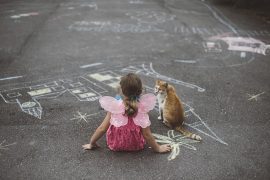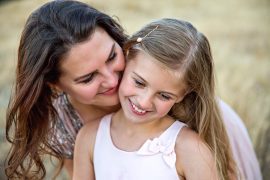So much of the behaviour that signals a child needs help with their insecurities are often missed because we’re so conditioned to judge a child to be difficult or just looking for attention.
Many parents and teachers adopt an approach that’s more flippant or dismissive; “Don’t worry, it’ll be fine”, “It’s not a big deal, just do it”. This sadly can leave a child all alone with their anxieties, and they may well feel shamed and judged to be weak or too sensitive. Parents often think they’re reassuring their child with messages such as “Don’t worry, you’ll do great”, aiming to convey that they don’t need to worry, but if a child is already worried or nervous, this approach again leaves the child feeling alone to process those scary thoughts and feelings. Children can better tolerate the nervousness and apprehension inherent in facing challenges when they sense their parent has more patience and understanding of their struggles.
We live in a society where children are applauded for being independent.
And parents can feel a lot of pressure to prove themselves through their child’s level of confidence and ability to be assertive. Parents can feel quite anxious and are tempted to transfer that pressure onto their child when they are resistant in a social situation or when taking part in a new activity like swimming or sports. It’s important not to discount or minimize the child’s feelings and needs in these situations, and important that we don’t inadvertently condition them to themselves discount their apprehension. In new situations, it’s natural for children to be discerning, it’s natural for them to gain the security that their attachment figure will remain available as they venture forth. One child may be nervous, while another child may just have a need to become more familiar, to watch and learn more before engaging and before leaving their parent’s side. This very same discerning approach can be highly beneficial and healthy for a teenager who’s navigating which situations, groups and activities they feel truly good about being involved in!
One of the biggest challenges for children is separating from their parent…
…and adapting to new situations like an early childhood setting or new caregiver, or any new activity or group of people. Children generally need an existing attachment figure (their parent generally) to be the bridge, to be present while they start to connect. With the security of their parent being present and available, they can slowly venture forward with greater confidence to make connections and slowly but surely bond with others, allowing them to eventually feel secure when their parent isn’t present.
This can be a delicate process and when a child feels rushed and pressured, it can increase their resistance, sending them back to square one to regain the security that they’ll be supported without pressure.
In adjusting to an early childhood environment, it can work best when the teacher teams up with the parent, working together to help the nervous child to build bonds and find their solid ground. It’s easy for a parent to be intimidated into going along with a settling in process, or lack thereof, that doesn’t feel comfortable to them. Most parents have some lingering authority issues from their childhood years in school and can struggle to speak up to represent their child’s best interests, yet it’s our job as parents to advocate for our children and to help the teacher in their often challenging role of helping the child integrate.
Managing our own worries and fears.
The parent who’s feeling worried or anxious about a challenge or transition their child is navigating, may be unaware that when their child looks at them they’re seeing their apprehension and this can have a generally inhibiting effect on the child. When a parent is going through a particularly rough patch, without being mindful that they’re transferring their fears, their child can lose their confidence and security resulting in being more resistant, anxious or reactive. Parents who are more prone to anxiety need to work especially hard to be conscious of their stress levels, their facials and body language and work harder to both relieve their own inner conflict (preferably with support), but also maintain connection and engagement with their child, picking up on those questioning looks and meeting them with a quality of connection and engagement that helps the child feel both acknowledged for their concerns and also reassured.
In our society, it’s often thought that children should be confident in settling in to new environments. Although this is slowly changing as more awareness of attachment science filters through, yet still many early childhood centres (primary school teachers or grandparents) more tend to believe that the parent’s presence is only encouraging the child’s dependence on the parent and inhibiting the child’s development of independence. Yet, again going back to what we’ve learned from attachment science, it’s through the meeting of a child’s dependency needs that helps them build the trust and security that leads to a healthier independence in the long run.
Genevieve Simperingham is a Psychosynthesis Counsellor, a certified Aware Parenting Instructor, parent educator, a blogger and public speaker. She’s been parenting with attachment principles from the beginning, her son is 21 and daughter 16. She runs the Peaceful Parent Institute in New Zealand and offers live and online events. Check out her website www.peacefulparent.com.










